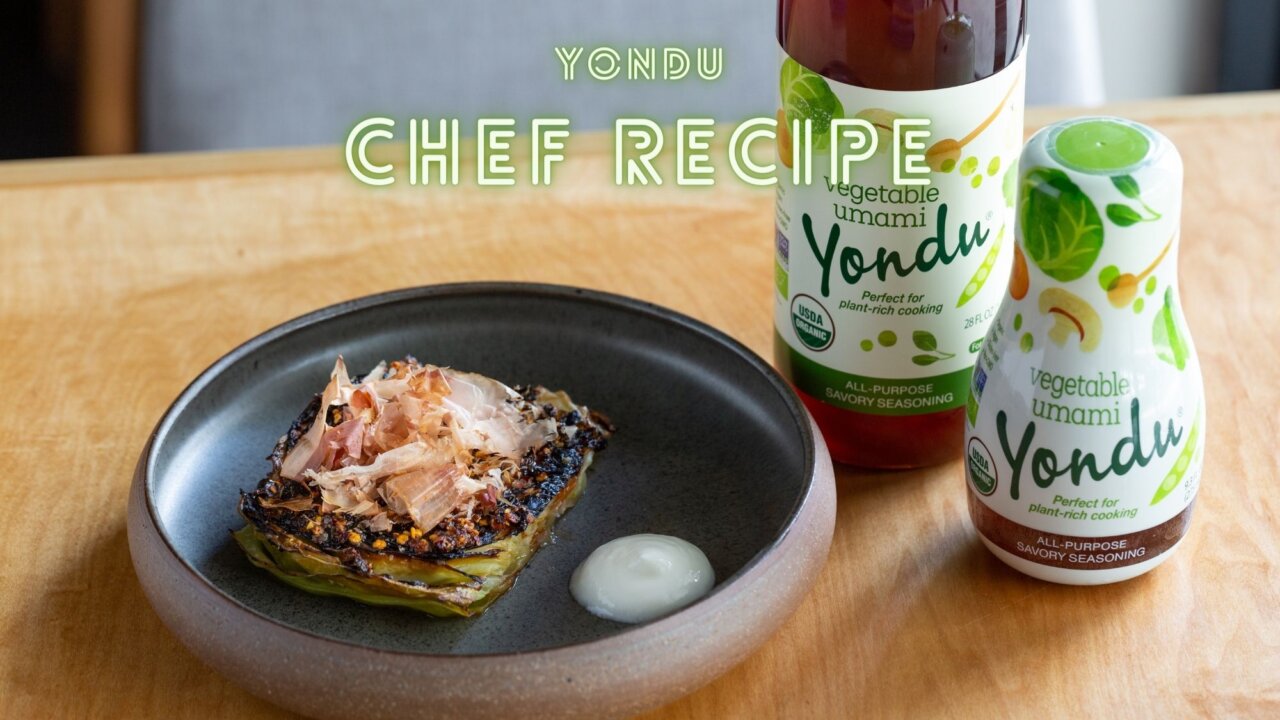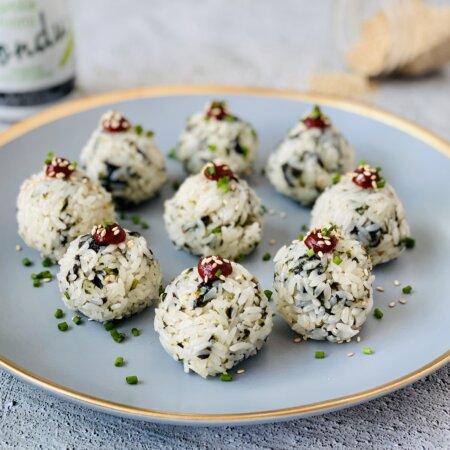Braised Cabbage in Umami Rich Salsa Macha
Created by Chef Rico Torres: "This is an Umami rich dish that I created for our Omakase pop-up during the pandemic. Every night guests would comment on how delicious and unexpected the cabbage was. The salsa macha on its own is a star. The addition of Yondu elevated this dish even farther."
- Whole head cabbage (Green, Savoy, or Napa work best for this dish)
- 1/2 cup Yondu Vegetable Umami
- Grass fed butter
- 3-4 cups olive oil
- Sesame seed oil
- ½ cup toasted sesame seeds
- Yondu stock or vegetable stock
- 6 heads of garlic; cloves separated and peeled (use more if desired)
- 1 ½ cup peanuts or pecans; shelled
- 20-25 dried guajillo chiles; seeds and stems removed and cut into thick strips with scissors
- 20 dried chipotle chiles; remove seeds if possible
- ½ cup Apple Cider Vinegar or more is desired
- 2 tablespoons Furikake or toasted seaweed; crushed
- 0.5 -1 oz shaved bonito flakes (optional)
Method
For the Salsa Macha
1.Fill a large pan with an inch of olive oil and gently bring to a medium heat. Add all the garlic cloves. Stir and cook gently until golden brown but not burnt.
2.Remove the garlic with a slotted spoon and set aside on paper towel.
3. In the same oil, add the dried chiles and stir constantly. You may need to lower the heat a little to avoid blackening the chiles. Cook carefully until almost tender.
4. Add the nuts and sesame seeds to the chiles and continue to cook another 5 minutes on medium-low heat; careful not to burn the chiles or the nuts.
5. Move the pan to a cool side of the stove and allow to cool-down completely. Do not add the hot oil to the blender.
6. Once the mixture has cooled enough, pour it into the blender. Add just enough new olive oil if necessary, to cover the chiles.
7. Add 2 tablespoons of Yondu
8. Add 3-4 generous splashes of apple cider vinegar
9. Add a pinch of sugar (optional)
10. Add enough salt to taste
11. Blend on high until all the ingredients have broken down to a smooth yet course consistency.
12. Check the seasoning. Does it need more Yondu Umami, salt, olive oil, or acid?
13. Store in a jar in the refrigerator for up to 4 months. Salsa macha is wonderful on just about every late-night snack.
For the Cabbage
1. If using green cabbage, cut into thick rounds. Remove the core. Use kitchen twine to hold the leaves in place. For savoy and Napa cabbage, cut into quarters leaving core intact to hold the leaves together. You can cut the core out just before serving. Tender cabbage will cook faster.
2. Bring a large heavy bottom pan to high heat.
3. Add 1 tablespoon butter and 2 teaspoons of sesame oil to the pan
4. Press Cabbage face down onto pan and allow to cook until nicely seared. Work in batches if necessary. Create a good even sear for maximum flavor.
5. Arrange cabbages face up in deep baking dish or pan with lid.
6. Add stock or water to pan covering the bottom 1/3 of cabbage.
7. Add remaining Yondu.
8. Cover and braise in a preheated oven at 350 for 20 min.
Note: for best results, allow to cool completely in a refrigerator until firm before moving.
9. Move to small sheet pan with parchment paper. Dry off any excess moisture. Season lightly with salt and generously spread or brush salsa macha onto cabbage. Roast uncovered for another 8-10 minutes.
10. Move to plate using a fish spatula or similar, cover with toasted sesame seeds, roasted crushed seaweed, and bonito flakes. Serve with whipped queso fresco or strained yogurt.





